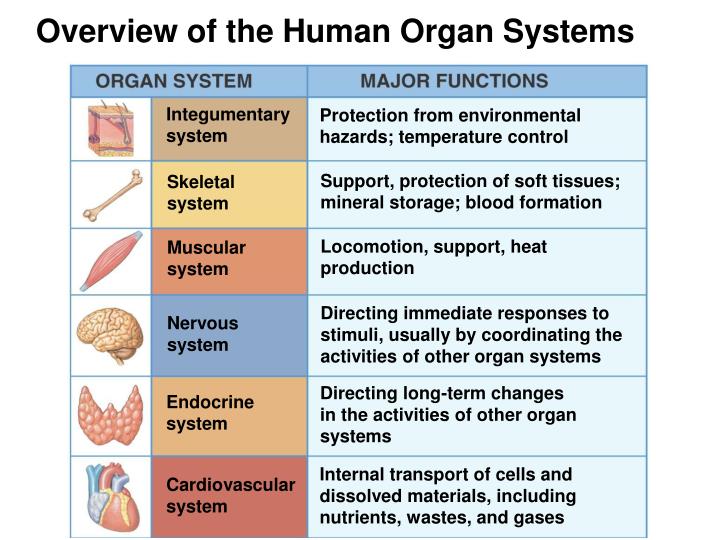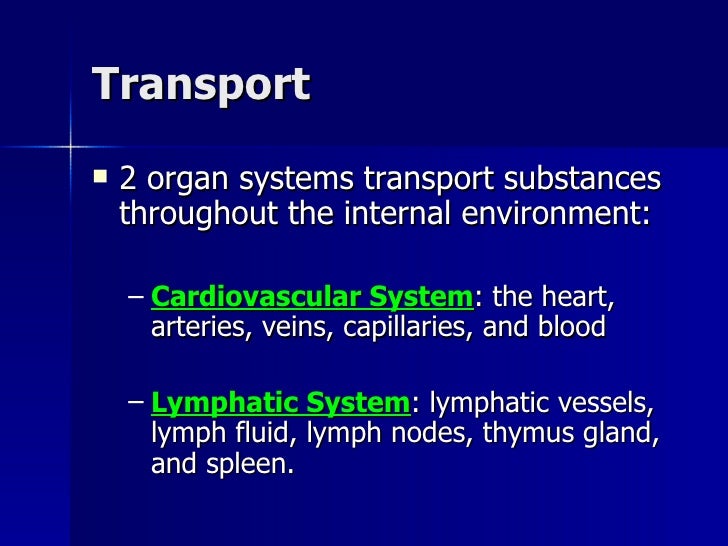
Support & Movement The organs of the skeletal and muscular system support and move body parts.
#ORGAN SYSTEM OVERVIEW SKIN#
Examples: The skin and various accessory organs, such as hair, nails, sweat glands, and sebaceous glands Some organs function in multiple systems īody Covering The Integumentary System : protect underlying tissues, helps regulate body temperature, houses a variety of sensory receptors, keeps pathogens out, and synthesizes certain products. Each includes a set of interrelated organs that work together to provide specialized functions. They are responsible for receiving information from the environment outside the body and relaying it to the brain for processing.Organ System The human organism consists of several organ systems. Our five senses make up a system within the nervous system. The nervous system is made up of a network of specialised cells, tissues and organs that coordinate and regulate the responses of the body to internal and external stimuli.Įquipped with his five senses, man explores the universe around him and calls the adventure science. The biological purpose of this process is the continuation of life. The human body has a system of organs that work together for the purpose of reproduction. The process of breathing allows these gases to be exchanged between the blood and lungs.

In this process cells use oxygen gas and produce carbon dioxide gas – a waste product that must be removed from the body. Our bodies are made up of countless cells all requiring oxygen to carry out the important process of respiration. Our bodies are held together by connective tissue. They control movement, posture and assist the body with heat generation.

#ORGAN SYSTEM OVERVIEW FREE#
It is articulated to allow free movement in conjunction with the skeletal muscles. The skeleton provides a framework on which the human body is arranged. The immune system is a protection mechanism composed of specialised cells, cell products, tissues, organs and processes within an organism that protect against pathogens.Ĭommonly known as the skin, this system wraps the body in a protective covering with a number of functions such as UV protection and temperature regulation, taking it well beyond being just a mere covering. Kidneys are blood purifiers filtering liquid from the bloodstream, removing undesirable substances (such as toxins) and returning those still required to the blood.

The excretory system is composed of the kidneys (urine-forming organs), the bladder (temporary storage for urine) and channels for moving this liquid waste around. Endocrine glands produce hormones (chemical messengers) released into the blood and transported to target sites around the body. Indigestible remains are then egested.Ĭomposed of a number of small organs distributed throughout the body, the endocrine system coordinates the metabolic activity of body cells by interacting with the nervous system. Ingested food is broken down into constituent nutrient molecules that are then absorbed into the bloodstream. This system resembles a long tube with attached organs.

The heart is a pump forcing blood into a network of blood vessels allowing it to travel to organs and delivery sites requiring oxygen gas for respirationnutrients and the removal of waste substances. The heart and blood vessels make up this system.


 0 kommentar(er)
0 kommentar(er)
